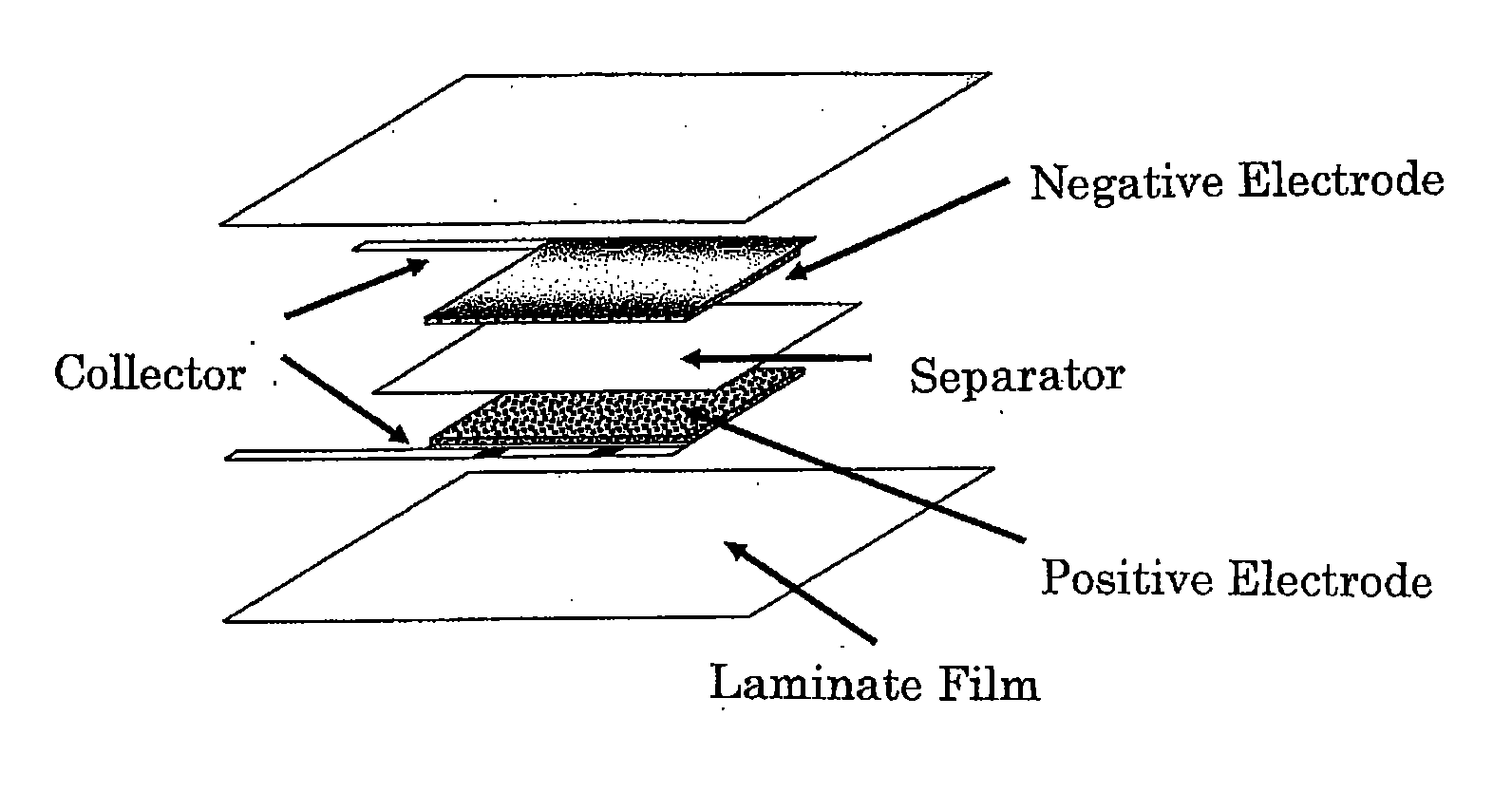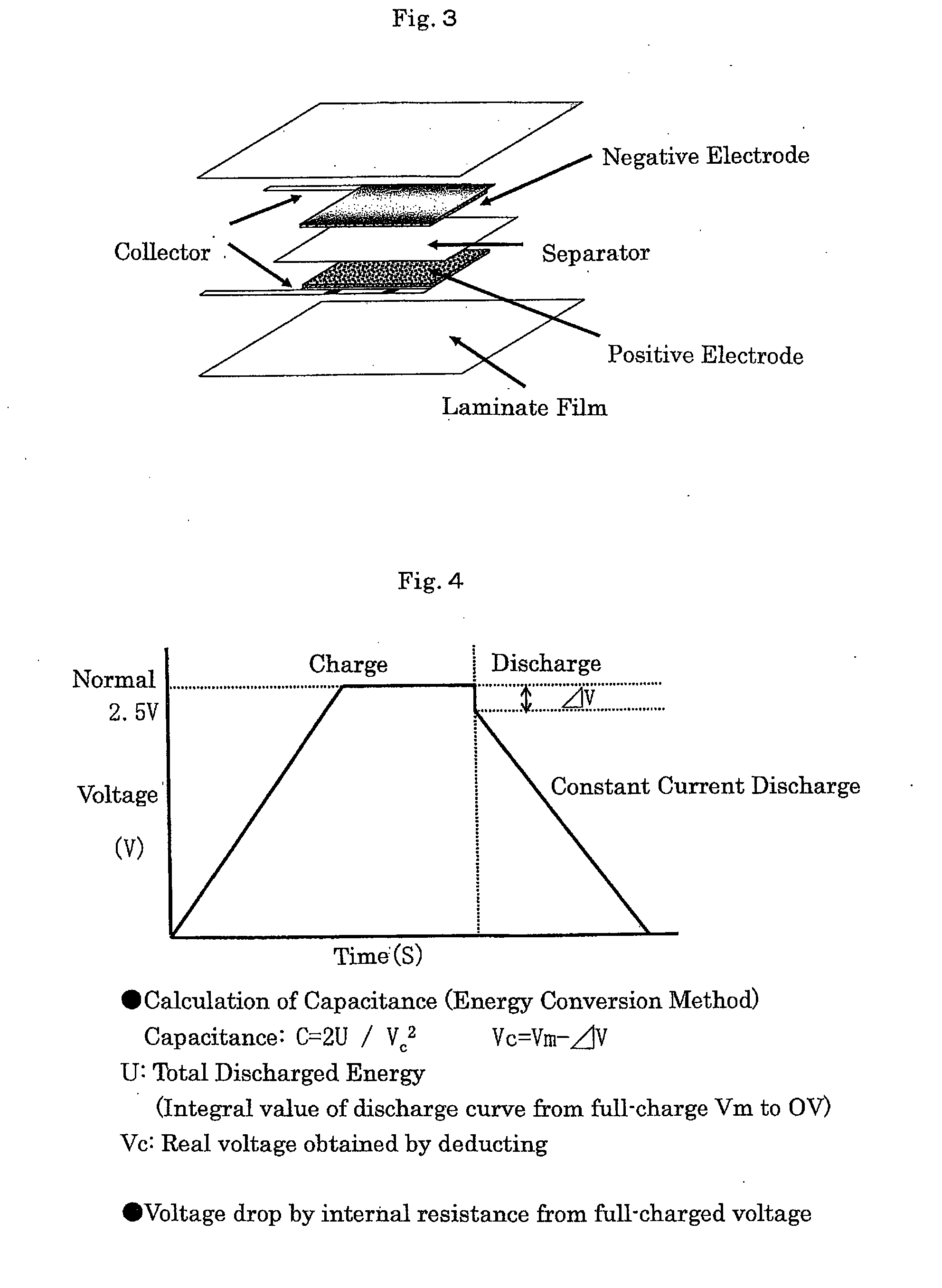Process of producing activated carbon for electric double layer capacitor electrode
a technology of double layer capacitors and activated carbon, which is applied in the direction of electrolytic capacitors, cell components, transportation and packaging, etc., can solve the problems of reducing specific surface area and large particle diameter of activated carbon, and achieves small particle diameter, easy and inexpensive activation, and large specific surface area
- Summary
- Abstract
- Description
- Claims
- Application Information
AI Technical Summary
Benefits of technology
Problems solved by technology
Method used
Image
Examples
example 1
[0049]The petroleum green coke used as the raw material in this example was produced by thermal-cracking a mixture of 30 percent by volume of a vacuum residue from Minas crude oil and 70 percent by volume of a heavy oil produced upon fluid catalytic cracking of a vacuum gas oil from a middle east crude oil, at a temperature of 500 to 600° C. using a delayed coker. The physical properties of the petroleum green coke are set forth in Table 1.
[0050]The petroleum green coke was calcined under the conditions set forth in Table 1, i.e., at a temperature of 550° C. for 3 hours. Thereupon, the temperature rise rate was 200° C. / hour. The physical properties of the resulting carbide after calcination are set forth in Table 1. The carbide was ground with a ball-mill, and the resulting particle size distribution is set forth in Table 2. The average particle diameter (D50) was 1.7 μm. Potassium hydroxide was blended in an amount of 220 parts by mass with 100 parts by mass of the ground product t...
example 2
[0059]The raw material used in this examples was produced by coking a mixture of 90 percent by volume of a bottom oil of a petroleum heavy oil obtained from a fluid catalytic cracker and 10 percent by volume of a vacuum distillation residue at a temperature of 500° C. for one hour. The raw material was calcined at a temperature of 600° C. for one hour thereby producing a carbide. The rest of the procedures was carried out in the same manner as that in Example 1.
TABLE 1CalcinationCalcinationH / C Atomic RatioVolatile ComponentTrueTemperatureTimeReductionReductionDensity° C.hr—Rate %mass %Rate %g / cm3Example 1Raw Material0.418—4.8—1.3655030.3984.74.212.51.37Example 2Raw Material0.422—5.8—1.3860010.367134.915.51.42
TABLE 2Before Activation (Carbide)After Activation (Activated Carbon)Particle Size Distribution (μm)Particle Size Distribution (μm)Specific Surface AreaD10D50D90D10D50D90m2 / gExample 10.91.72.611.832350Example 21.42.851.43.262240
TABLE 3ElectrodeDensityCapacitanceCapacitanceg / ccF / ...
example 3
[0061]As the starting material was used petroleum green coke (carbon material) having an average diameter of 2.2 μm, which was calcined (preheating treatment) at a temperature of 550° C. for one hour before activation. The physical properties of the carbide after the preheating treatment are set forth in Table 4.
[0062]Thereafter, the heat-treated product of the carbon material was mixed with KOH so that the mix weight ratio (KOH / Coke ratio) was 2.0. An activation reaction is allowed to proceed at a temperature of 750° C. for one hour in a nitrogen gas atmosphere. After the reaction, the reaction mixture was repeatedly washed with water and then with hydrochloric acid to remove metallic potassium remaining in the carbon material, and dried to produce an activated product (carbon material for an electrode). As the powder characteristics of the resulting carbon material for an electrode, the particle size distribution (laser diffraction particle size analyzer) and specific surface area...
PUM
 Login to View More
Login to View More Abstract
Description
Claims
Application Information
 Login to View More
Login to View More - R&D
- Intellectual Property
- Life Sciences
- Materials
- Tech Scout
- Unparalleled Data Quality
- Higher Quality Content
- 60% Fewer Hallucinations
Browse by: Latest US Patents, China's latest patents, Technical Efficacy Thesaurus, Application Domain, Technology Topic, Popular Technical Reports.
© 2025 PatSnap. All rights reserved.Legal|Privacy policy|Modern Slavery Act Transparency Statement|Sitemap|About US| Contact US: help@patsnap.com



